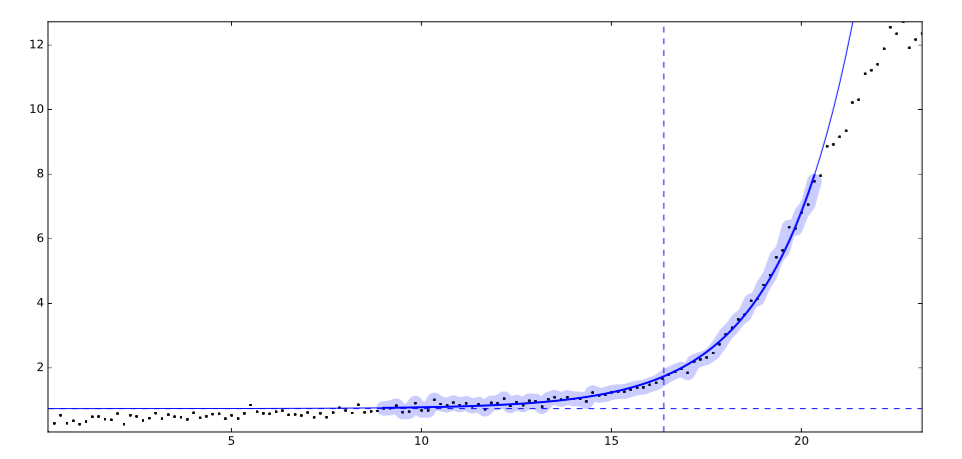A tool for estimating growth rates in growth curves.
Project description



Description
A tool for estimating growth rates in growth curves. The tool fits λ ⋅ e μ⋅x + N 0 to any candidate growth phases of the growth curve that have increasing growth, i.e. where both the first and second derivative of the growth function are positive. To identify these phases reliably, the tool utilizes a custom smoothing function that addresses problems other smoothing methods have with growth curves that have regions with varying levels of noise (e.g. lots of noise in the beginning, then less noise after growth starts, then more noise in the stationary phase).
The parameter N 0 of the model can optionally be constrained. This is recommended if the value is known. The growth rate in calculated growth phases can only be properly compared if their N 0 (baseline OD; when the organism is at its initial population) points to a similar stage of actual growth.
Installation
To install croissance, use Python 3.x pip:
pip3 install croissance
Usage
Croissance can be used from command-line or as a Python library. The input to the command-line tool is generally one or more *.tsv files (tab-separated values) with the following format:
time |
A1 |
A2 |
… |
|---|---|---|---|
0.0 |
0.0 |
0.01 |
… |
0.17 |
0.14 |
0.06 |
… |
… |
… |
… |
… |
Each sample should be recorded in its own column with the sample name in the header row. The time unit is hours and the value unit should be OD or some value correlating with OD.
To process this file, enter:
croissance example.tsv
The output will be generated at example.output.tsv. The output is formatted with column headers: name (sample name), phase (nth growth phase), start (start time), end (end time), slope (μ), intercept (λ), n0 (N 0) and a few others. By default, each sample is represented by at least one row, containing phase “0”. This is simply the highest ranking phase if one was found for this curve; otherwise the remaining columns are empty.
To also output a PDF files with figures (example.output.pdf), enter:
croissance --figures example.tsv

To see a description of all the command-line options available, enter croissance --help.
For use from Python, provide your growth curve as a pandas.Series object. The growth rates are estimated using croissance.process_curve(curve). The return value is a namedtuple object with attributes series, outliers and growth_phases . Each growth phase has the attributes start (start time), end (end time), slope (μ), intercept (λ), n0 (N 0), as well as other attributes such as SNR (signal-to-noise ratio of the fit) and rank.
from croissance import process_curve result = process_curve(my_curve) print(result.growth_phases)
Project details
Download files
Download the file for your platform. If you're not sure which to choose, learn more about installing packages.













